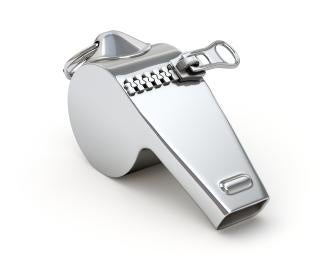OSHA recently released a new Whistleblower Investigations Manual, clarifying its relaxed investigative standard of reasonable cause rather than the more restrictive preponderance of the evidence standard.
The Manual provides:
For all whistleblower statutes enforced by OSHA, the investigative standard is whether there is reasonable cause to believe that a violation occurred. This standard applies to each element of a violation.
Under the reasonable cause standard, OSHA must believe, after evaluating all of the evidence gathered in the investigation from the respondent, the complainant, and other witnesses or sources, that a reasonable judge could rule in favor of the complainant. The threshold OSHA must meet to find reasonable cause that a complaint has merit requires evidence in support of each element of a violation and consideration of the evidence provided by both sides or otherwise gathered during the investigation, but does not generally require as much evidence as would be required at trial. Because OSHA makes its reasonable cause determination prior to a hearing, the reasonable cause standard is somewhat lower than the preponderance of the evidence standard that applies following a hearing. Accordingly, OSHA’s investigation must reach an objective conclusion – after consideration of the relevant law and facts – that a reasonable judge could believe a violation occurred.
OSHA also provides new guidance on, among other things, information disclosure in order to help protect against potentially violent employees learning about previously undisclosed information during the investigation and then becoming inspired to commit violence against his or her employer.
The Manual notes:
During an investigation, OSHA will provide to the complainant (or the complainant’s legal counsel) the substance of the respondent’s response. OSHA generally will accomplish this disclosure by providing the complainant with a copy of the respondent’s response and any additional information provided by the respondent that is related to the complaint. In circumstances in which providing the actual documents would be inadvisable (for example, if OSHA believes providing the redacted versions of the documents might lead to an incident of workplace violence), OSHA, in its discretion, may provide a summary of the response and additional information to the complainant.
The Workplace Safety Report (WSR) Take
Employers should brace themselves, as we believe the reasonable cause standard may result in OSHA finding that more cases should proceed on the merits beyond the investigative stage. This could result in increased legal costs for employers as fewer cases will be dismissed after the initial OSHA investigation. It could also increase the number of whistleblower complaints generally as employees may be more willing to make complaints to OSHA knowing that they need not establish trial-level proof of a violation for their complaint to move forward on the merits.


 i
i


